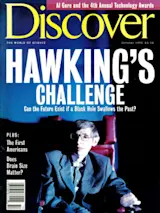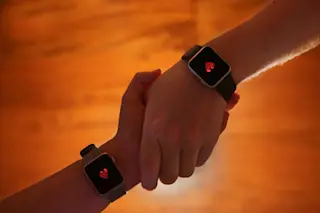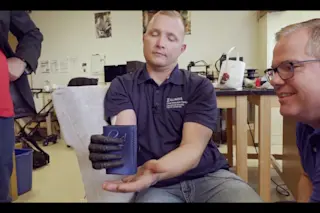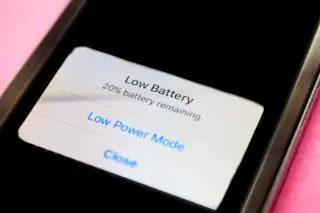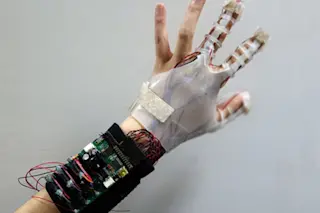Winner
XP Peritympanic hearing aid
Henri Garcia, PhiIips Hearing Instruments
About 28 million Americans--roughly one in every nine--have a hearing impairment that could be eased by the use of a hearing aid. However, fewer than one in four of those afflicted avail themselves of the device. People still think that someone wearing a hearing aid doesn’t understand things or is even somehow mentally confused, says Wayne Staab, a Phoenix-based audiologist. But now the Philips XP Peritympanic device allows people with hearing loss to get around that stigma. Priced from $1,500 to $2,000, the XP costs 20 percent more than conventional hearing aids.
The XP, developed over five years by a Netherlands-based Philips Hearing Instruments technical team led by electrical engineer Henri Garcia, is the first invisible hearing aid. The tiny cylinder--about a quarter- inch wide and a half-inch long--fits deep inside the auditory canal, almost touching the eardrum, where no one can see it. But it’s there for reasons beyond cosmetics. We’ve known for years that putting an instrument that deeply into the ear canal would provide tremendous auditory advantages, adds Staab, who helped Philips engineer improvements to the device. But until now we haven’t been able to make an instrument fit down there comfortably and still meet wearers’ auditory requirements. The XP finally gets down into the ear canal, where we know hearing aids really belong.
Conventional hearing aids typically create new problems for wearers while solving others. Devices that rest in the cup of the outer ear turn breezes into noise. They often have to be removed when the wearer uses the telephone. By plugging the ear, they also transform the auditory canal into a resonating chamber where low-frequency sounds, like those made by the user’s own voice or chewing, are grossly amplified. The larger the space between a hearing aid and the eardrum, the more resonance in the lower frequencies, Staab explains. The problem: while about 60 percent of the sound energy in ordinary conversation is contained in low-frequency vowel sounds, those sounds convey only about 5 percent of speech’s actual information. Higher-frequency consonant sounds contain roughly 5 percent of speech’s power but convey 60 percent of its intelligibility--the sounds most hearing aids mask. When the hearing aid is placed deep in the ear, the length of the resonating chamber is shortened; the XP assures that higher- frequency sounds are made clear.
Although its electronics are among the smallest made, the XP is unique in its ability to hold the components so deep in the ear. To fit comfortably in the deep inner ear’s bony cavity, the XP had to be crafted from a spongy and flexible material; but to fit securely and anchor delicate electronic components, the material also had to be firm. To meet both demands, Philips compounded a new proprietary, full-comfort material. As it warms in the ear, the material becomes flexible enough to conform to the shape of the bony part of the canal, but it remains firm enough to stay in place and protect onboard electronics. The material also smothers sound waves, preventing them from leaking back from speaker to microphone and sparking the annoying whistle of feedback.
To ensure each XP’s snug fit, Philips also perfected a new, liquefied silicone putty to make a cast of each wearer’s inner ear. The putty fills the auditory channel near the eardrum, where it sets and yields a mold of the wearer’s ear canal. Using the mold as a model, technicians can then tailor the aid to its wearer’s contours. A thin, transparent cord ending in a small knot extends from the hearing aid to the wearer’s outer ear; to remove the XP, the wearer simply hooks the knot with a fingernail and pulls.
Unfortunately, approximately 30 percent of the hearing-impaired population have ear canals that are too small, are too sharply bent, or have preexisting medical conditions that prevent safe fitting of the XP. No hearing aid will ever be perfect, Garcia says. But the XP gets us a lot closer to meeting the real needs that people with hearing loss have.
FinaIists
Ken Leland, an engineer at AT&T; Consumer Products Laboratories in Holmdel, New Jersey, for the Extended Range Cordless Telephone 9530, which has a range four times that of traditional cordless units. Operating at a 900 MHz frequency band that is virtually free of interference, the AT&T; phone delivers a crystal-clear sound up to one mile from its base. Because it is fully digital, conversations cannot be monitored by eavesdroppers.
Villy Hansen (electronics) and David Lewis (design) of Bang & OIufsen in Denmark, for the Beolab 6000 Active Loudspeaker System. Its oval-shaped speakers are compact--just 43 inches high and 4 inches wide-- yet deliver excellent bass sound, a combination that until now has been considered impossible. Bang & Olufsen developed a new technology, called adaptive bass linearization, that boosts the bass in relation to the rest of the frequency range. When the volume is turned up, only the upper ranges are amplified. This enables a small loudspeaker to produce large-speaker performance.
Richard J. Lynch, vice president-network at BeII AtIantic MobiIe in Bedminster, New Jersey, for Personal Line, which enables customers to have a single phone number at which they can be reached wherever they are: at home, in the office, in the car, at the grocery store. Personal Line determines the handset’s location by means of Bell Atlantic’s Advanced Intelligent Network and then routes calls accordingly. It operates like a regular cordless phone near base stations in the home or office, and switches to the Bell Atlantic cellular network everywhere else.
Neil Skinn and Stephen Freeland of TransPerformance in Fort Collins, Colorado, for the Digital Tuning System DTS-1 for electric guitars. With the touch of a button, this computerized system instantly adjusts a guitar’s strings, eliminating the time-consuming method of manual tuning. Moreover, performers no longer need separate guitars tuned specifically to each musical piece. The DTS-1 allows musicians to transpose melodies and change tunings or pitch while playing. Joe Perry of Aerosmith, Jimmy Page, and Mark Slaughter are among professional musicians now using TransPerformance guitars.


